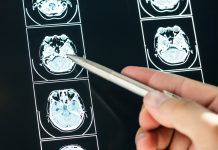
Stroke is often thought of as a condition that primarily affects older adults, but it can also strike young women, often with little warning. Understanding the signs of stroke in women under 40 is crucial because early detection and treatment significantly improve outcomes.
This review explores the signs of stroke in this demographic, using recent research to highlight what to look out for and why these symptoms might differ from the traditional signs commonly associated with stroke.
Traditionally, the most well-known stroke symptoms are summed up by the acronym FAST: Face drooping, Arm weakness, Speech difficulties, and Time to call emergency services.
However, studies indicate that young women may experience a broader range of subtler symptoms, which can delay diagnosis and treatment.
This is particularly concerning as the incidence of stroke in young people, including women under 40, has been on the rise, a trend observed in research published by the American Heart Association.
One reason young women may experience different and more varied stroke symptoms is hormonal factors, such as those related to pregnancy, birth control usage, or other health conditions like migraines or autoimmune diseases, which are more prevalent in females.
For instance, during pregnancy, the risk of stroke may increase due to higher blood volume and changes in blood pressure. Moreover, migraine with aura is associated with a slight increase in stroke risk, particularly in women who smoke or use oral contraceptives.
In addition to the FAST symptoms, young women might experience unique signs such as fainting, seizures, hallucinations, nausea, or sudden behavioral changes.
These symptoms can often be mistaken for less severe illnesses, leading to crucial delays in stroke treatment.
A study focusing on younger stroke patients found that non-traditional symptoms like confusion, general weakness, and changes in mental status were more commonly reported by women under 40, as noted in the journal Stroke.
Another critical aspect is the type of stroke young women are likely to experience.
While ischemic strokes (caused by a blockage in an artery) are the most common overall, young women have a relatively higher incidence of hemorrhagic stroke (caused by bleeding in the brain) compared to their male counterparts.
This type of stroke can lead to symptoms like severe headache, vomiting, and an altered state of consciousness, which might not immediately suggest a stroke to those experiencing them or to healthcare providers.
The importance of recognizing these signs cannot be understated. Early treatment is crucial and can include medications to dissolve clots or surgery to repair blood vessel damage.
Delays in treatment can lead to worsened outcomes, including permanent disability or death. Therefore, education about these broader and less recognized symptoms of stroke in young women is vital.
Research continues to emphasize the need for awareness campaigns tailored specifically to younger populations that outline all potential stroke symptoms, not just those most common in older adults.
Healthcare providers are also encouraged to consider a diagnosis of stroke in young women who present with unusual symptoms, especially if they have risk factors such as migraine, smoking, contraceptive use, or a history of autoimmune diseases.
In conclusion, while stroke in young women under 40 is less common, it presents a unique challenge due to atypical symptoms that can easily be overlooked.
Recognizing and responding to these signs swiftly can make a significant difference in recovery and long-term health.
Therefore, raising awareness among both healthcare professionals and the public is crucial to improving outcomes for young women at risk of stroke.
If you care about stroke, please read studies that diets high in flavonoids could help reduce stroke risk, and MIND diet could slow down cognitive decline after stroke.
For more health information, please see recent studies about antioxidants that could help reduce the risk of dementia, and tea and coffee may help lower your risk of stroke, dementia.
Copyright © 2024 Knowridge Science Report. All rights reserved.



